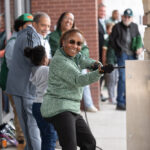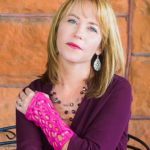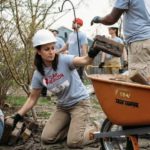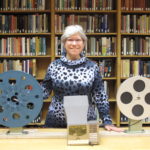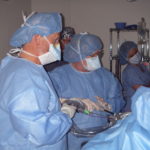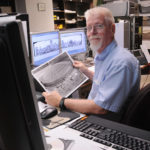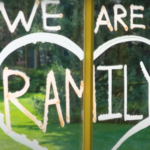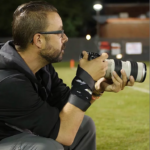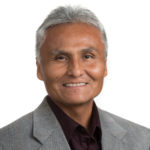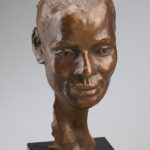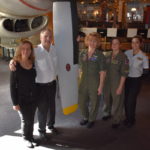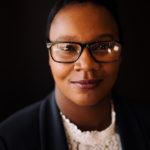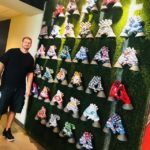Life experiences can produce great ideas. The ability to act on them, however, is often an entirely different matter, unless you’re Diana Hall (M.B.A., ’07).
Hall, who was born and raised in Pueblo, Colorado, had a younger brother with cystic fibrosis who required regular visits to the hospital. “I grew up in Children’s Hospital where I saw kids having to adapt to medical devices instead of the other way around.” 
That keen observation lay dormant while Hall earned a chemical engineering degree from Colorado School of Mines before joining an engineering consulting firm and later becoming a software test engineer for the telecommunications companies Nortel Networks and Ericsson.
She began pursuing her Master of Business Administration at Colorado State University after returning to Pueblo to be near family while taking time away from her career to raise her daughter. “The MBA program helped me see that I wasn’t reaching my full potential. Without it, I wouldn’t know how to identify market niches or determine how to address customer needs. It helped me make practical use of my engineering degree.”
After graduating in 2007, Hall started a mentoring program for children who were experiencing domestic violence and living in substandard conditions. She noticed that the orthopedic casts worn by children with broken arms quickly became dirty and unsanitary, and prevented them from properly washing their hands. One first-grade boy being raised by his disabled grandparents got the cast on his arm wet when taking baths, and the moisture trapped against his skin caused permanent scarring.
“That was a real problem that had not been addressed,” Hall said. Using her engineering design skills, she made him a new plastic cast using a 3D printer, and then said, “‘take this to your doctor and ask him if you can wear it instead.’ His doctor called me later and asked, ‘Can you make me some more of these?’”
 In response, Hall founded ActivArmor in 2014 and began working with a consultant at the University of Maryland’s Robert E. Fischell Institute for Biomedical Devices to help the Food and Drug Administration develop test protocols for 3D-printed wearable medical devices.
In response, Hall founded ActivArmor in 2014 and began working with a consultant at the University of Maryland’s Robert E. Fischell Institute for Biomedical Devices to help the Food and Drug Administration develop test protocols for 3D-printed wearable medical devices.
Since then, ActivArmor has manufactured thousands of waterproof, hygienic, custom-fitted, and breathable casts and splints that are superior to traditional ones made with cotton gaze covered with plaster or fiberglass. The proprietary process begins with a digital scan made with an iPhone application to generate a detailed 3D model of the patient’s limb, which is then uploaded to a cloud-based application.
Based on the physician’s specific instructions, a customized cast or splint is fabricated from recyclable ABS plastic. and if a 3D printer is onsite, the process can be completed within a few hours. The finished products are one-third the cost of traditional casts, are registered with the FDA, and meet the biological criteria of the International Organization for Standardization.
ActivArmor is now a global biomedical company working in 11 countries and with more than 40 hospitals and clinics throughout the U.S., including the Jacksonville Orthopedic Institute, St. Luke’s Hospital Network, and Children’s Hospital Colorado. Its 3D casts are worn by NFL football players, Olympic athletes, and athletes of all ages across all sports.
 Hall has spoken extensively about medical device manufacturing, and in 2016, presented at TEDx in Colorado Springs. Her company is on ColoradoBiz magazine’s Top 100 Manufacturers list and was the first Pueblo-based business to be awarded a Colorado Office of Economic Development’s Advanced Industries Grant. Among numerous business awards, Hall recently received the Colorado Manufacturing Woman of the Year Award in 2022.
Hall has spoken extensively about medical device manufacturing, and in 2016, presented at TEDx in Colorado Springs. Her company is on ColoradoBiz magazine’s Top 100 Manufacturers list and was the first Pueblo-based business to be awarded a Colorado Office of Economic Development’s Advanced Industries Grant. Among numerous business awards, Hall recently received the Colorado Manufacturing Woman of the Year Award in 2022.
There is a natural urgency that comes with advocating for innovative products that improve the quality of life of people with acute or chronic injuries. Hall is currently securing funds for additional global expansion and is planning to launch other customized products into new markets. She is a woman on a mission who seems to thrive on the challenges of disrupting big markets, and she has probably already designed a customized solution to mitigate the dangers of moving at such a break-neck pace.




